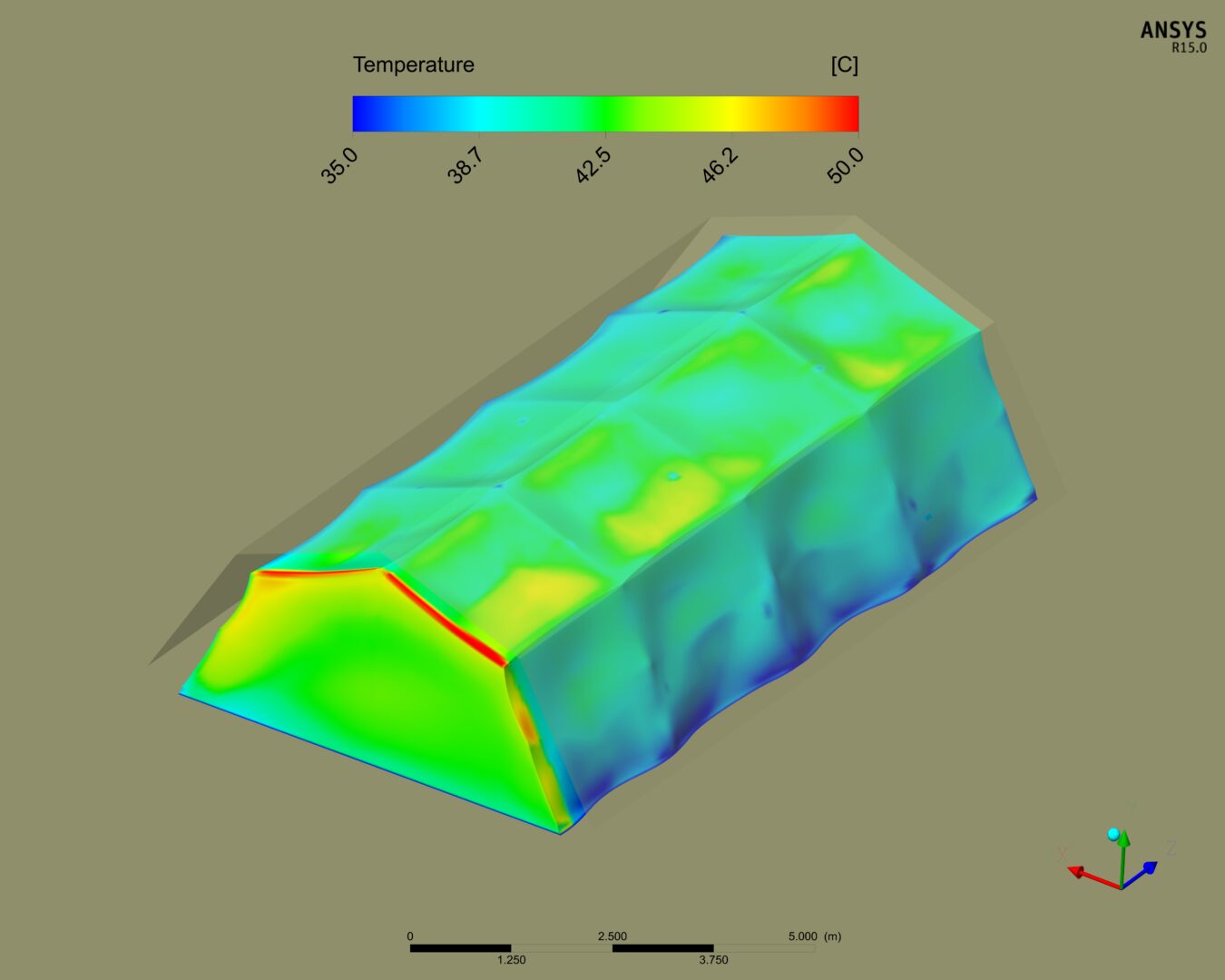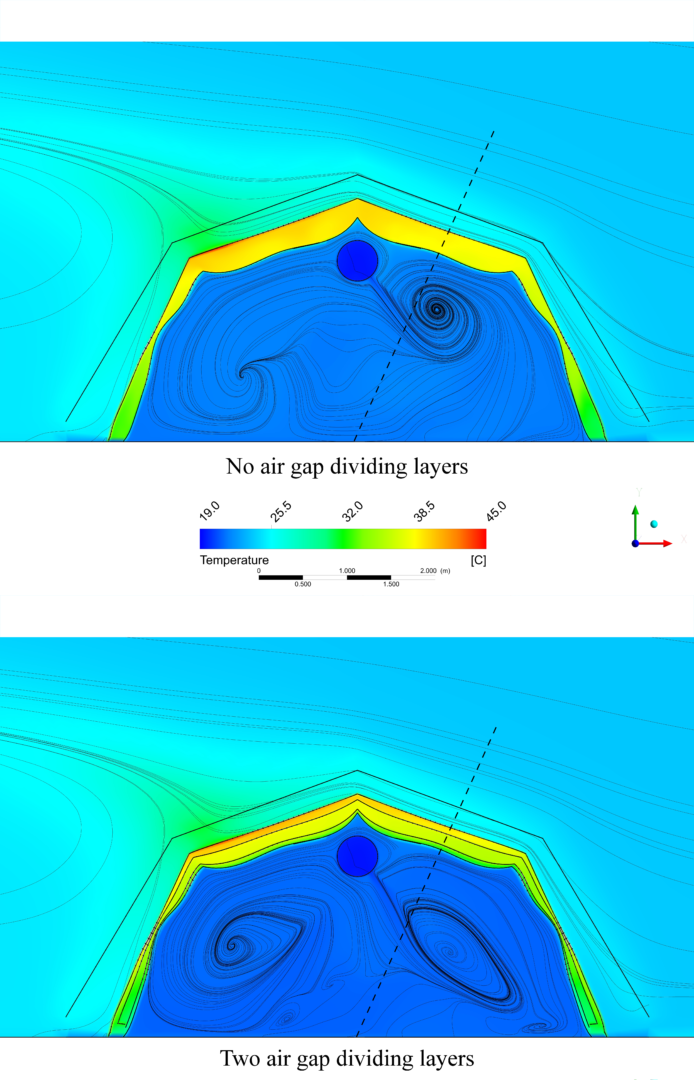
SEEDS: SMART Energy-Efficient Deployable Shelter
Challenge
Attacks on fuel delivery mechanisms and fixed energy supplies in Afghanistan and Iraq demonstrate that energy inefficiency endangers our troops and threatens missions. In short, energy efficiency can save lives on forward operating bases. ARA is developing next-generation, energy-saving technologies for deployed shelters, including the SMART Energy-Efficient Deployable Shelter (SEEDS). The goal of SEEDS is to help forward operating bases reach near self-sufficiency by maximizing their energy efficiency and reducing energy consumption from Environmental Control Units (ECUs) by up to 70%.
Solution
SEEDS maximizes the thermal efficiency of expeditionary shelters by improving the effective thermal resistance of each of the shelter’s envelope layers. As a result, the energy needed by the ECUs in cooling and heating the shelters is reduced by up to 70%. ARA achieved the improved shelter design via computational modeling that led to development of the technologies necessary to increase the shelters’ thermal efficiency. ARA approached this project in three steps:
Collect and analyze data focused on understanding and characterizing existing deployable shelter technologies:
ARA developed a shelter performance database by compiling and reducing data related to shelter thermal behavior and energy consumption collected from multiple U.S. Department of Defense agencies and programs, including the Joint Capability Technology Demonstration program, the Air Force’s Basic Expeditionary Airfield Resources program, the Air Force Research Laboratory, and the U.S. Marine Corps. This ensured that the operational performance of existing shelters was fully understood, so current limitations could be corrected.
Develop the technologies needed to improve thermal performance:
First, ARA created a Shelter Performance Computational Fluid Dynamics Model. This combined thermal and fluid dynamics model was validated using high-resolution temperature field measurements from a deployable shelter. The validated model allowed for conducting numerical experiments to optimize the different shelter layer designs. ARA then worked closely with manufacturers to evaluate suitable materials, design innovative methods for application, and determine or address potential design constraints related to implementation. The following advancements were targeted:
- Improved Fly and Skin Solar Reflectivity and Thermal Resistance
- Improved Liner Thermal Resistance
- Improved Air Gap Performance
- Reduced Shelter Air Infiltration
Implement the developed technologies into a SEEDS shelter:
The SEEDS shelter was installed in the Forward Operating Base Laboratory at the U.S. Army Research and Development Center’s Construction Engineering Research Laboratory for testing and performance evaluation against a dedicated baseline. The improved shelter was instrumented to quantify the achieved thermal performance improvements. The measurements included temperature, humidity, door use, and energy use. While the investigation is ongoing, the initial results are positive and demonstrate energy savings.



